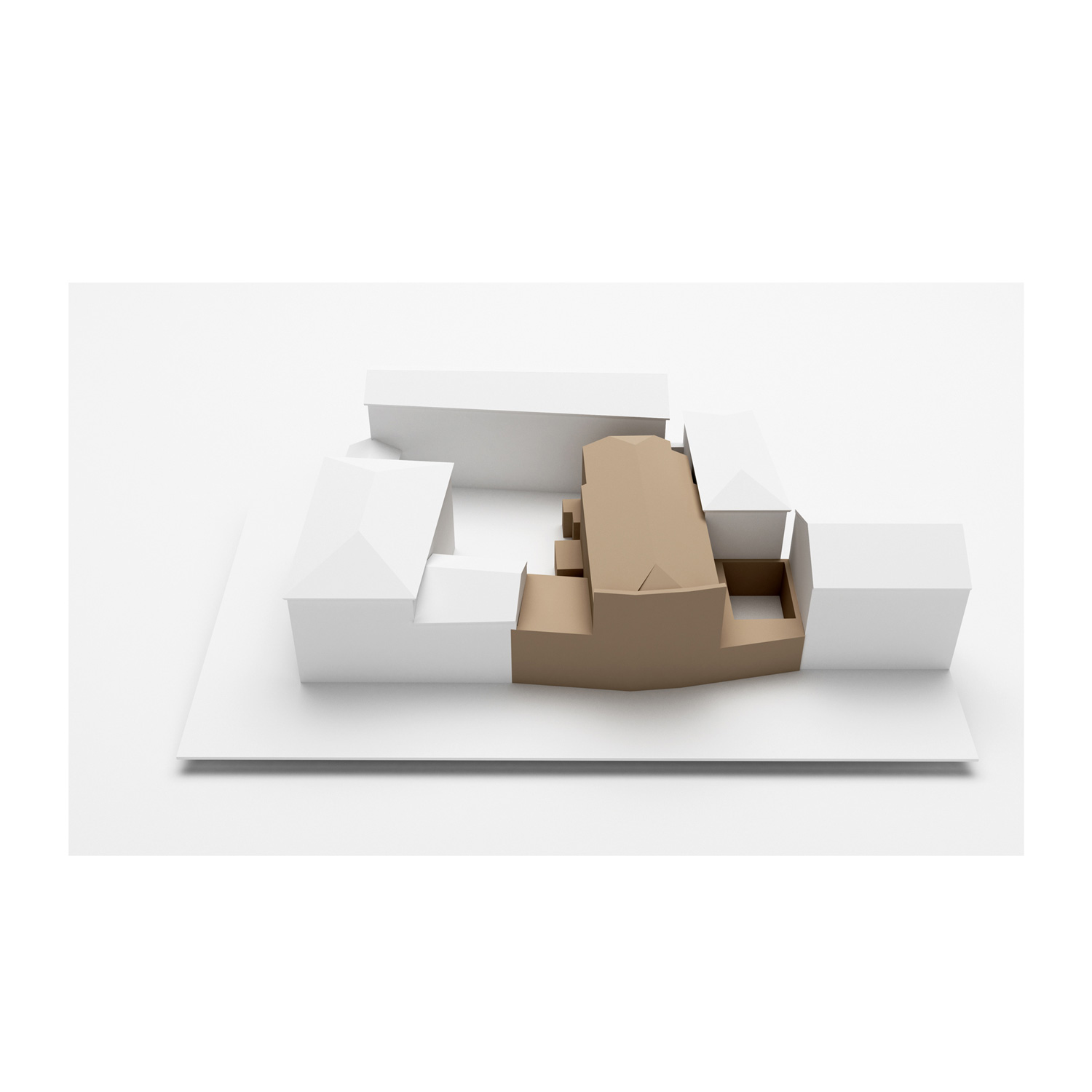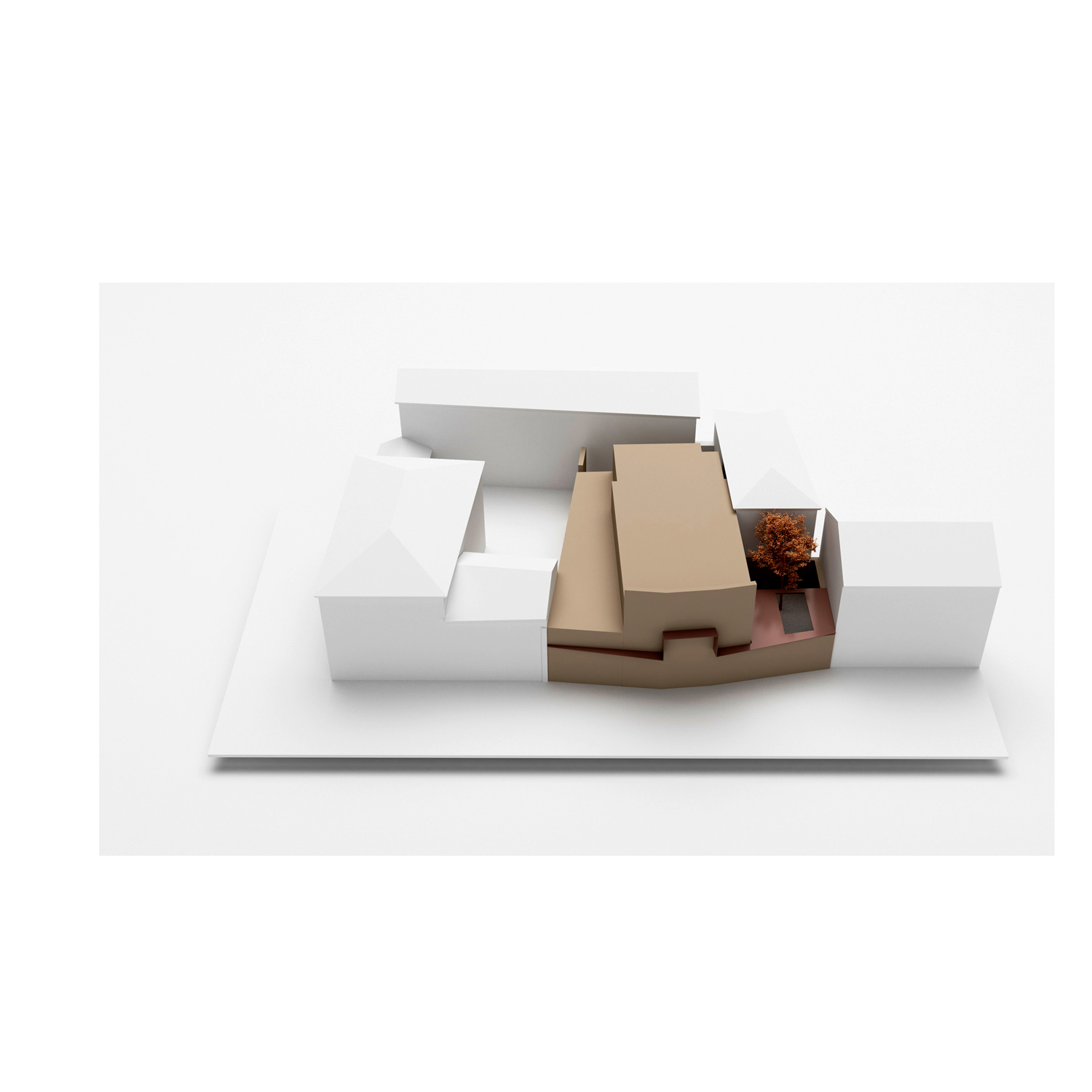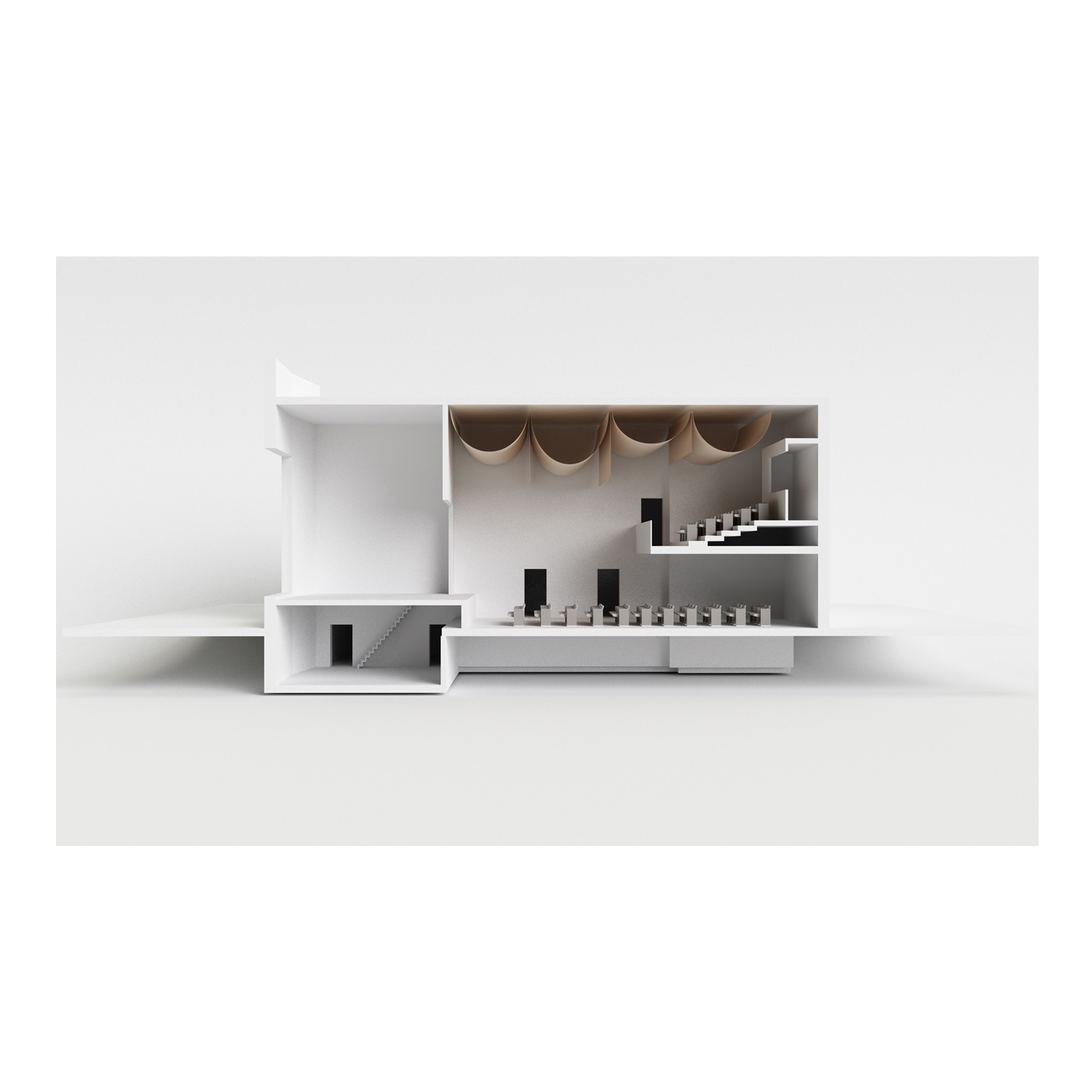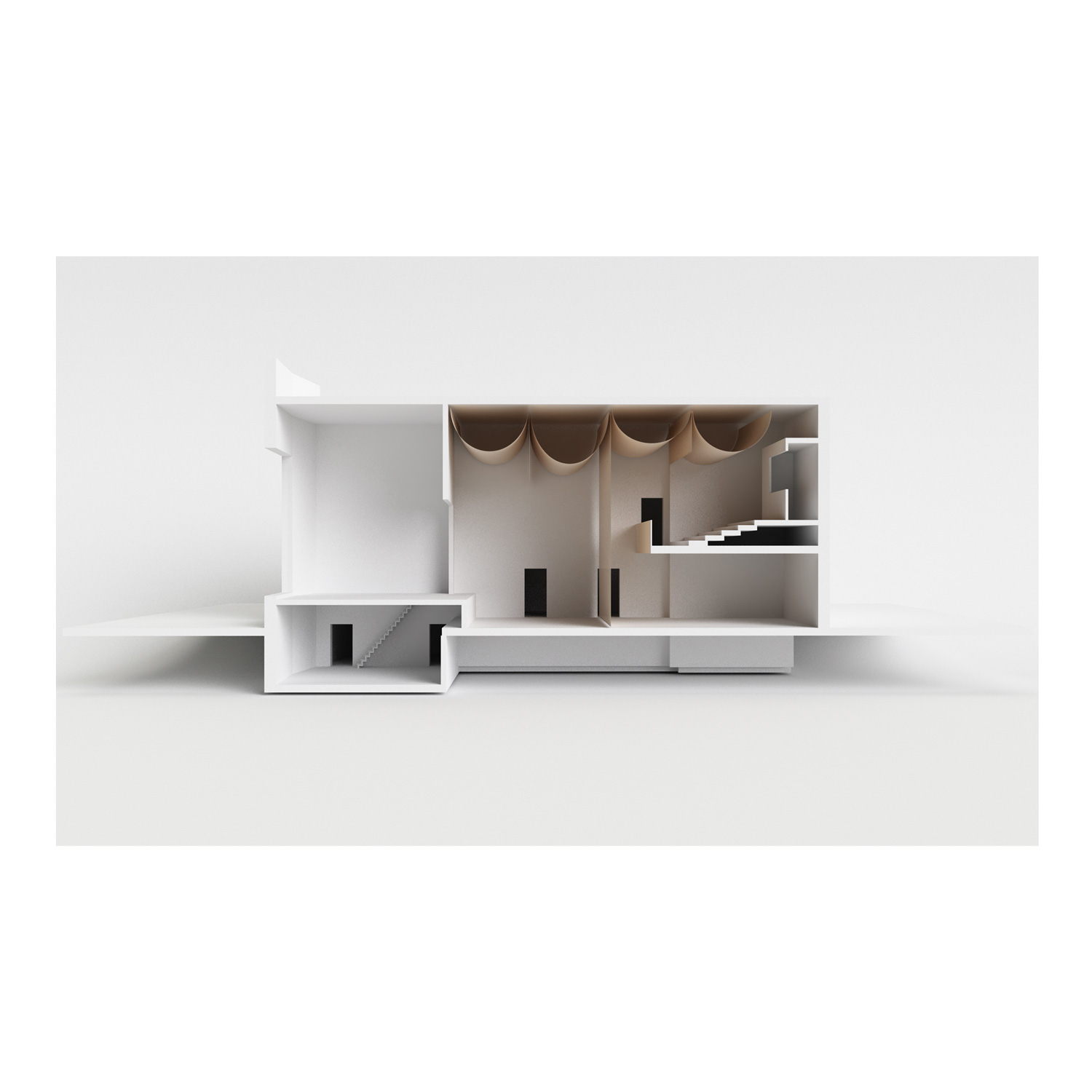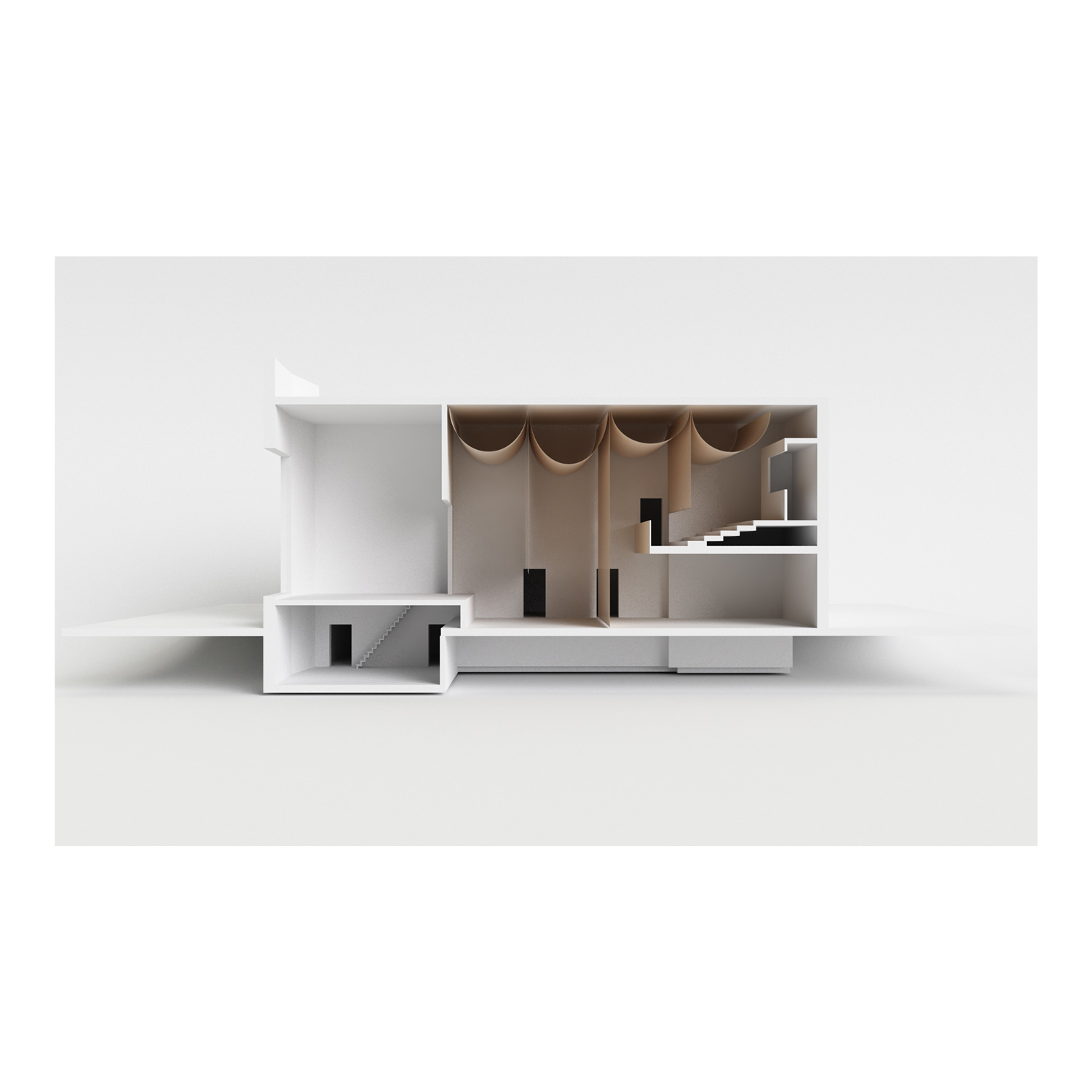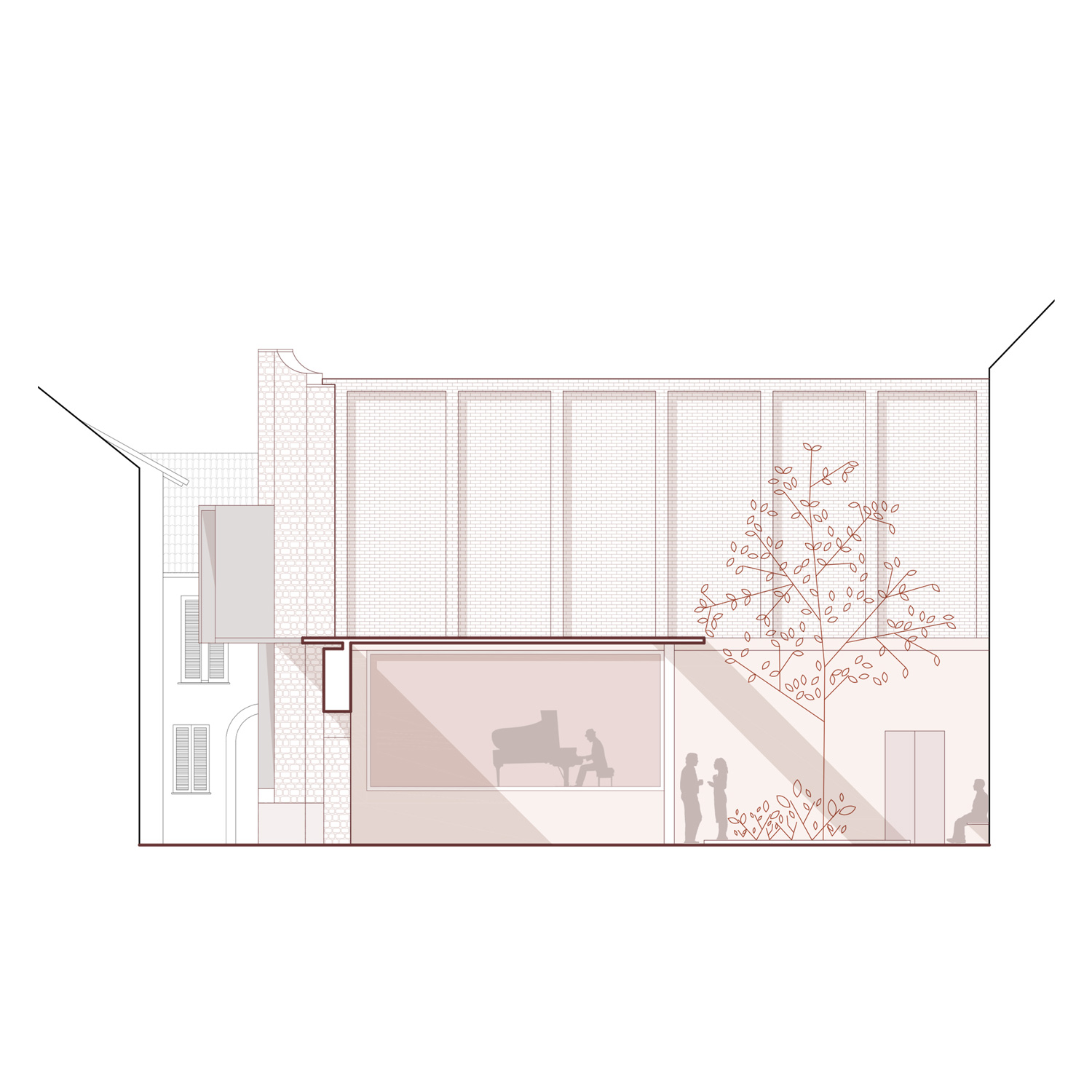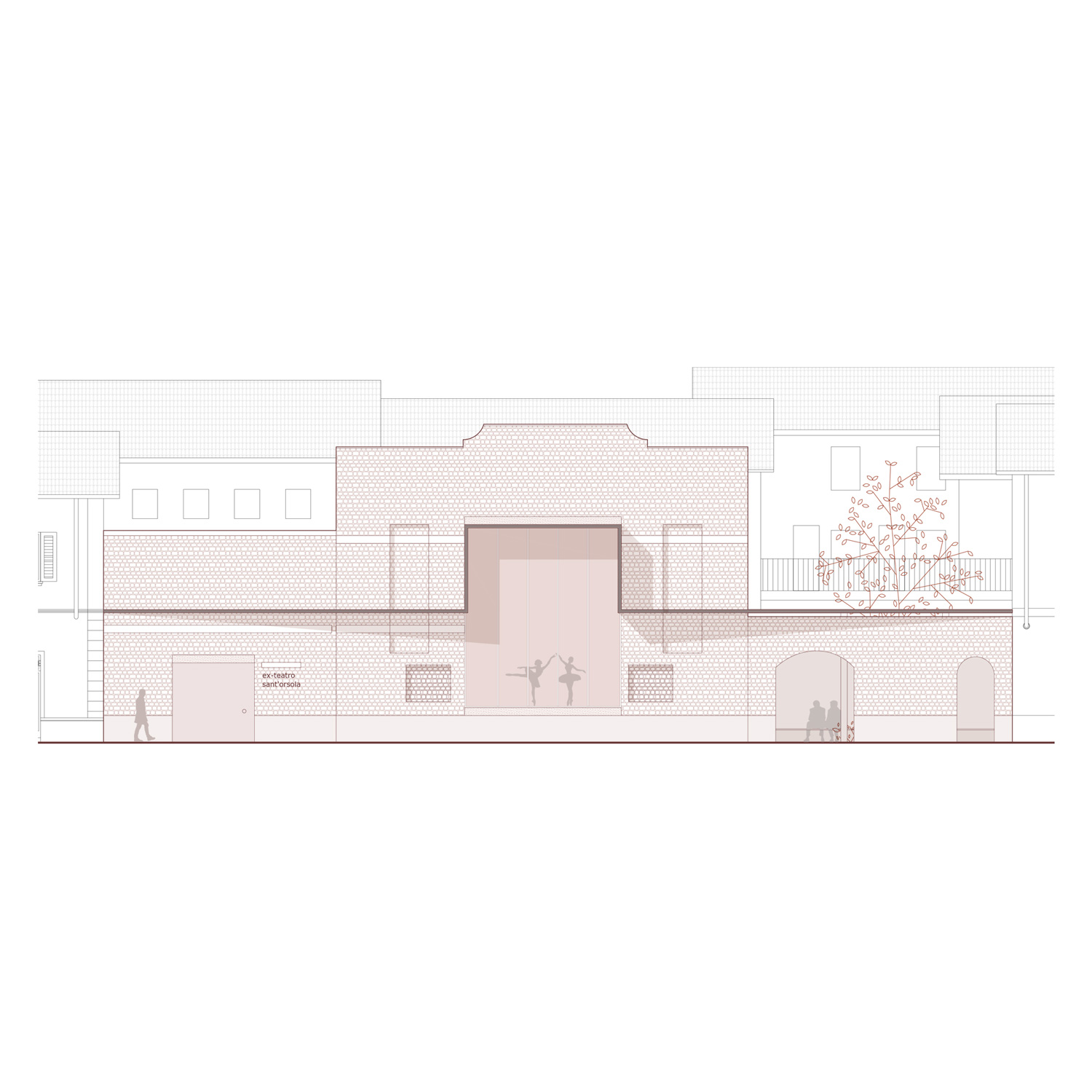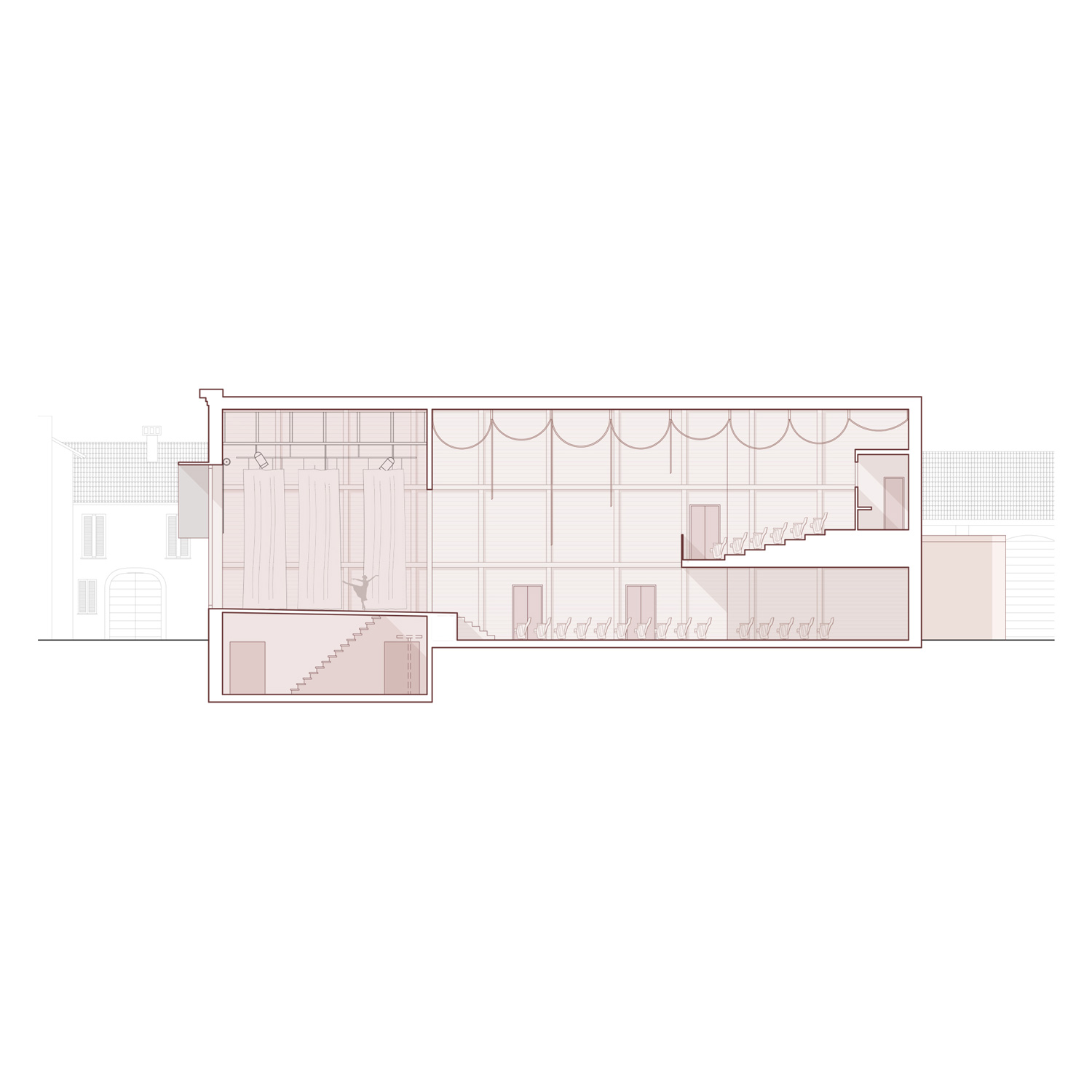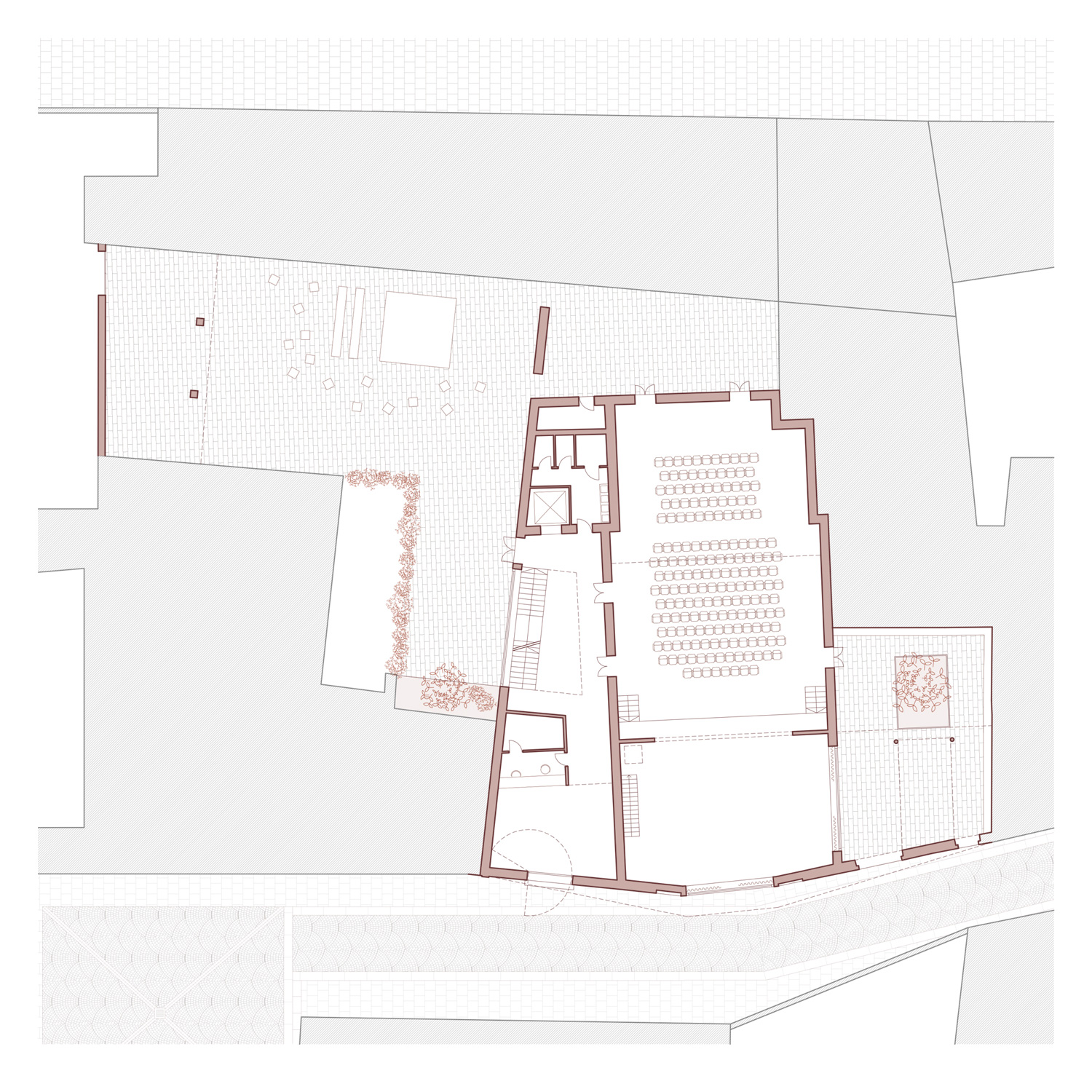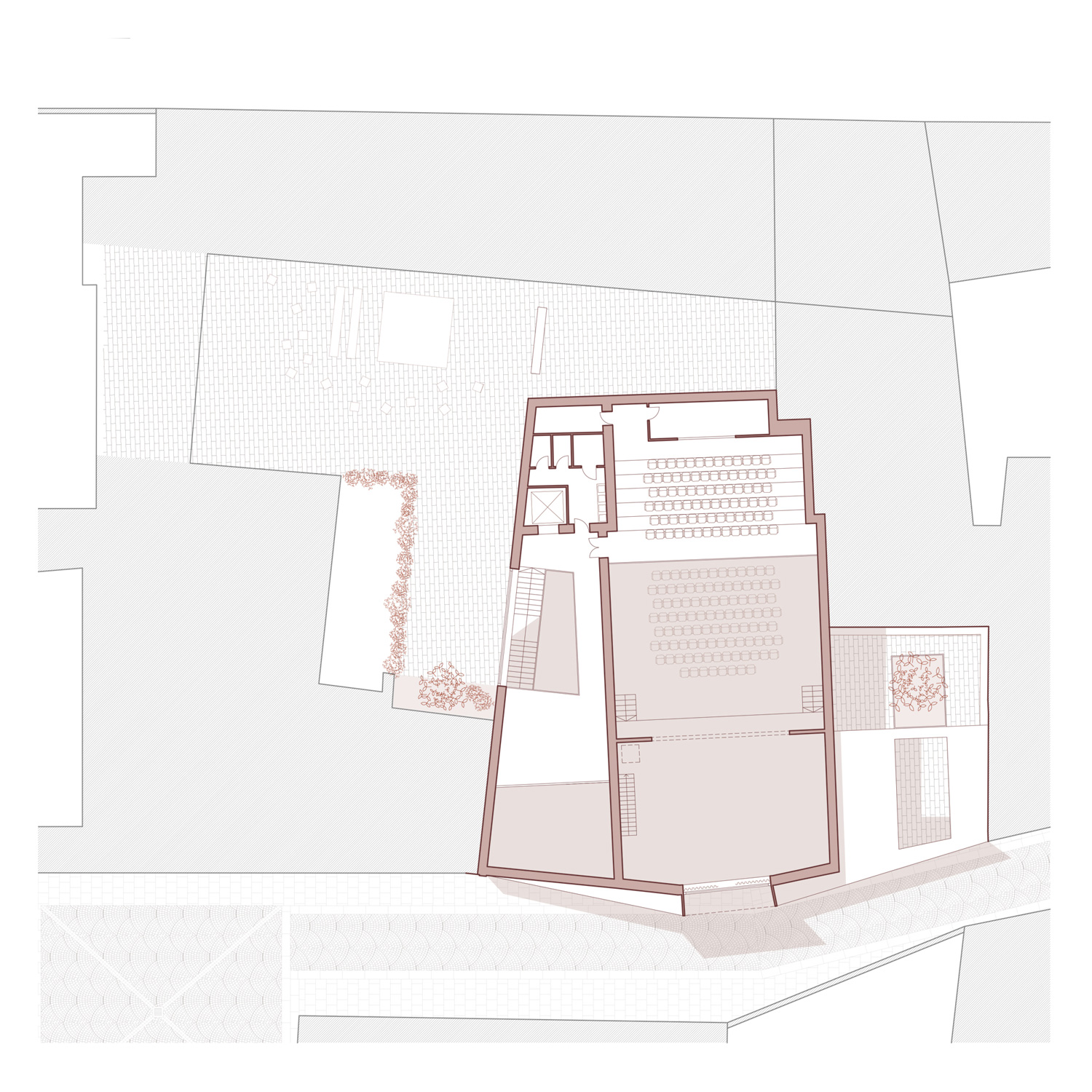☉ Ex teatro Sant'Orsola is a proposal by Duepunti Architetti developed in 2021. It is located in Chiari Italy in an old town setting. Its scale is small with a surface of 900 sqm a budget of 1.268.000 € and a ratio of 1.409 €/sqm. Key material is wood.
The office conducted research on the topic of vacuum, understood not only as absence or lack, but also as a specific quality of space that allows movement, in which, on certain cognitive levels, impressions of emptiness are produced.
This concept of vacuum is strongly linked to material, relative, personal aspects and consists of two solid foundations, one objective, that is, a place characterized by a drastic reduction compared to a model; and another subjective which is produced in the most intimate sphere of the observer, often also linked to the expectation projected on that particular place.
Through this reflection, the project was structured as an ascending climax based precisely on the deepening of the concept of emptiness, starting from the physicality of the same, lack and absence, passing through the use of vacuum as a means of signification, to conclude with emptiness seen as a personal experience, capable of arousing contrasting sensations, amazement, wonder and reflection.
The urban context of the historic center of Chiari, in which the Theater is located, is a rigid map, defined and regulated by the buildings, within which almost everything is occupied, leaving little space for emptiness. The squares thus become excavations, negative forms that allow you to stop, meet, observe, places of relationship and happening, in which a collective structure and the scenario of the dynamics of urban events are reflected.
Therefore, not only physical places, but also areas capable of transmitting sensations, symbolic and even metaphorical contents. The void thus becomes the protagonist of the urban space, a catalyst capable of arousing very strong and at the same time contrasting feelings, consoles and saddens, calm or restless. The void thus allows the person who lives and crosses it to find himself again.
Within this setting just described, the new theater was conceived as a negative space, closely connected to the surrounding context, in which one arrives and immerses oneself through a path that passes from density to emptiness.
This path becomes a process of urban regeneration of the entire area of the «cittadella della musica», an area within the historic center, in which several buildings with a strong value linked to art, music and culture, enter into close communication, thanks to empty spaces that allow people to meet and reflect. Places excavated in the density of the inhabited area, within which moments of common life take place and evolve, such as cultural events, concerts, shows, exhibitions and exhibitions. In the rigidity of the urban fabric, flexible spaces are thus created, to be modeled and changing, not subject to the rigid schemes of the urban system.
The definition of the vacuum in which the Theater will evolve develops within the enclosure delimited by the brick facade on the alley of peace and by the surrounding buildings with the internal courtyards, which from resulting spaces, unused and forgotten, are transformed into environments capable of to amaze the people who walk these paths, acting as catalysts to attract them within them. This operation is enhanced by the demolition of the existing closures on the appurtenant courtyard, accessible from the alley of peace, to allow a high degree of visual and physical permeability.
A progressive discovery of new spaces, enveloping and engaging, based on the gradual exploration of these evolving places, within which cultural events will develop.
The research carried out on the theme of emptiness has been extended to the Theater itself, which becomes a physically defined space, but discontinuous with respect to what surrounds it, which can be reached through the courtyard which in turn evolves and transforms itself into an open place, collective, in which movement and variation are produced, where the passage of time and human action are made explicit.
The Theater and the surrounding voids thus open up to the city, both from a metaphysical and a visual point of view, thanks to the large openings that allow a direct and continuous exchange with the context and the people who walk the neighboring streets.
